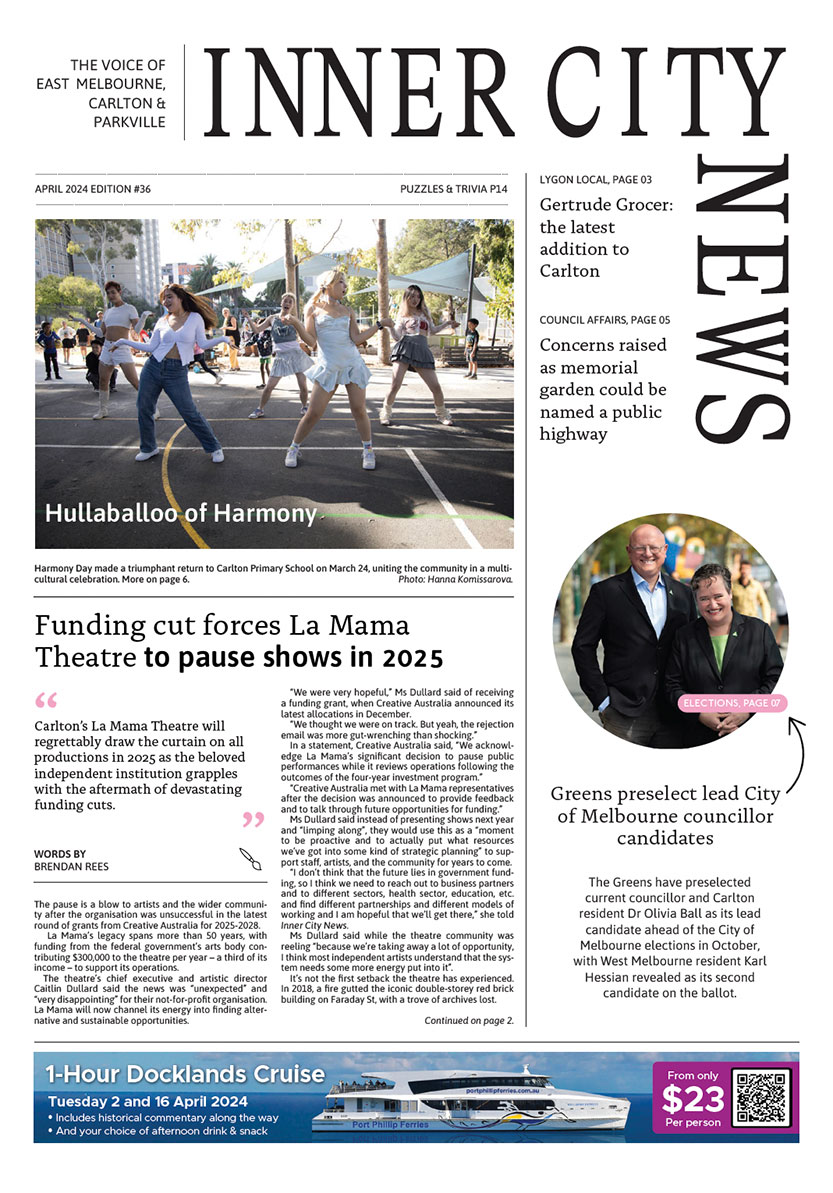East Melbourne at work
East Melbourne in the past was generally regarded as a purely residential suburb with little commercial or industrial activity except for the large and very visible enterprises of the Bedggood shoe factory in Jolimont and the Victoria Brewery in Victoria Parade.
But there were a number of smaller highly successful businesses, many tucked away down lanes and behind houses. The firm of Murray & Hill, building contractors and joiners, was one of these.
At the Crown land sales on July 7, 1864, Thomas Murray had bought two blocks of land that backed on to one another. One is now numbered 478-482 Victoria Parade, and the other is numbered 110 Albert St. Later the same year Murray, with business partner Peter Hill, erected a wooden workshop at the back of the Victoria Parade block.
During the following years they built houses on the street frontages. Murray & Hill built many houses in the East Melbourne area, some for clients, some for themselves as investments, and others as their own homes. But their main line of work remained joinery and a large variety of timber fittings were constructed in the workshop ready for delivery and installation all over Melbourne and occasionally beyond.
The two partners retired in 1889 and John Murray, a nephew of Thomas, and James Francis Crow, who had married Peter Hill’s daughter, carried on the business as Murray & Crow. The new partnership continued the work of the old, adding considerably to the local streetscapes.
In the early hours of October 24, 1891, the workshop mysteriously caught fire. This was a spectacular event and was described in detail by the daily newspapers. We learn that the building was two storeys high and built of brick and iron, so it must have been rebuilt, or perhaps added to, since its early days. Both floors were stacked with timber meaning fuel was abundant. The workshop was surrounded by mainly single-storey houses and once alight it could be seen from afar.
The only access was down a narrow lane allowing the firemen very little space to work. The neighbouring houses were in danger and the inhabitants were evacuated with what possessions they could carry. Two hours later it was all over. The workshop and all its contents were completely destroyed, including a great deal of machinery, but the neighbouring houses were all untouched. The place was well insured, and Murray & Crow rebuilt and resumed a successful business.
Very little of the firm’s work has been identified but one beautiful example is to be found at Purrumbete, the magnificent home built for the Manifold family in the Western District. In 1901 Guyon Purchas designed alterations to the house, and according to the Heritage Victoria database “the most significant changes were made to the main rooms along the north front, which were rebuilt with outstanding Art Nouveau interiors”.
In the photo shown here of the interior of Murray & Crow’s workshop the carpenters pose in front of the work in progress. Above and behind them hangs the intricate carving that now forms the balustrade of the minstrels’ gallery above the hall at Purrumbete. James Francis Crow is distinguished by his bowler hat.
John Murray died in 1911 and James Crow made the decision to retire. All the plant and equipment was sold but the premises remained industrial with a variety of business carrying on work there until the building was demolished and the site incorporated into the block of flats now there.
Next door to Murray & Crow was a similar complex of workshop and houses owned by Thomas Wright, also a building contractor. A lane ran through Wright’s land which has now been named Contractors Lane in recognition of these two businesses which created so much of the East Melbourne we know today •
Caption: Murray and Crow’s workshop. State Library of Victoria, accession no: H37116.

Carlton language school championed by Ukrainian refugee




 Download the Latest Edition
Download the Latest Edition